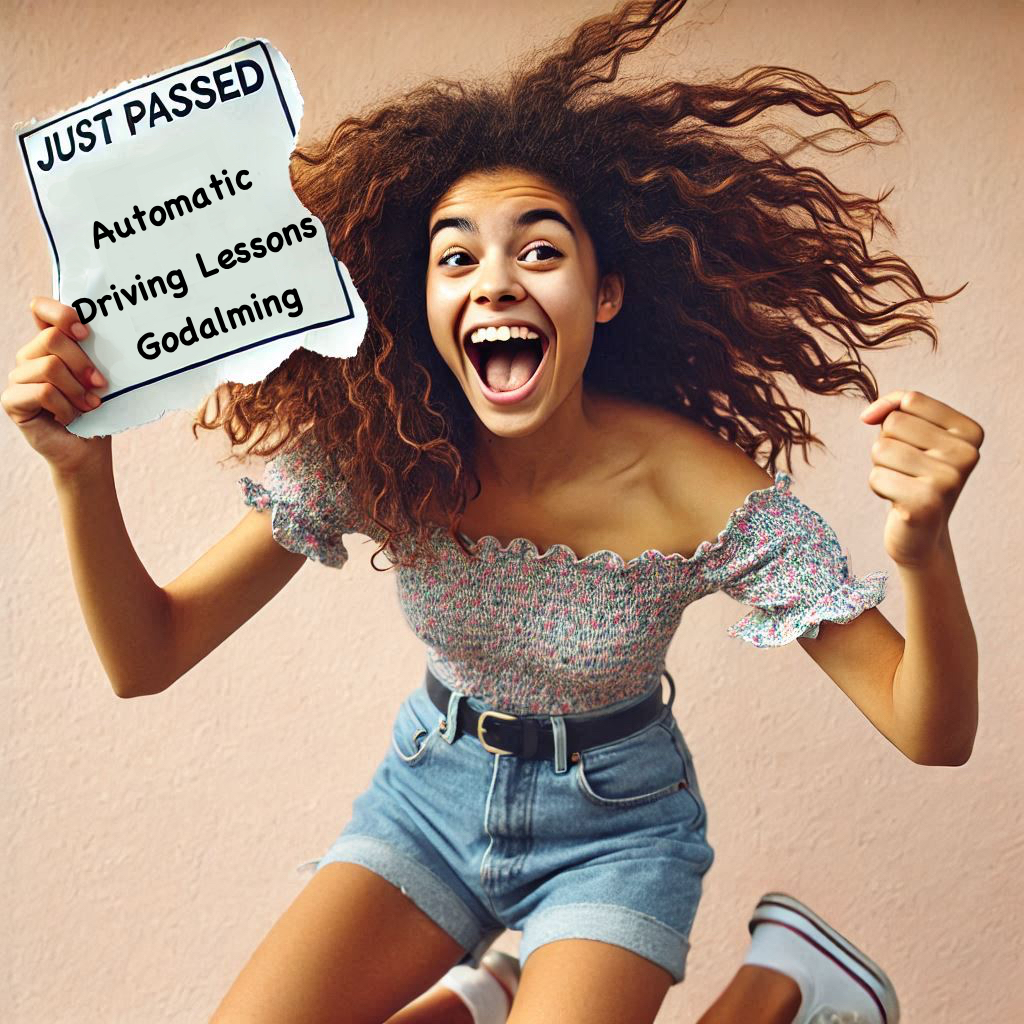Automatic Driving Lesson Godalming
Your local Driving Instructor Godalming

Automatic Driving Lessons Godalming
Prefer a simpler driving experience?
Our automatic driving lessons in Godalming allow you to focus on developing your driving skills without the complexity of manual transmission. Our instructors will equip you with the necessary skills to drive confidently in any situation.
Learning to drive an Automatic car in Godalming
Learning to drive an automatic car can be a more straightforward experience compared to a manual vehicle, as these cars handle gear changes automatically. Here’s an overview of how automatic vehicles function when approaching roundabouts and junctions, as well as how they manage gear selection during deceleration and changes in terrain.
Approaching Roundabouts and Junctions
When approaching a roundabout or junction in an automatic car, the system automatically selects the appropriate gear based on your speed, acceleration, and driving conditions.
Automatic Gear Selection
Sensor-Based Controls:
Automatic transmissions use various sensors to determine the best gear for the current speed and driving situation. When you slow down to navigate a junction or roundabout, the car may change down to a lower gear to provide better acceleration when you need to enter traffic.
Smooth Transitions:
As you ease off the accelerator or brake while approaching these areas, the transmission will automatically adjust, allowing for a smooth driving experience without any need for manual gear changes.
Slowing Down for Corners and Hills
Automatic cars also excel in adapting to changing driving conditions while slowing down for corners or climbing and descending hills.
Deceleration for Corners
Engine Braking:
When approaching a corner and decelerating, the automatic transmission will typically change down as needed to help reduce speed while maintaining engine power.
This ensures you have enough response when it's time to accelerate out of the corner.
Smooth Handling:
The automatic system manages gear changes smoothly, allowing you to focus on steering and navigating rather than worrying about shifting gears.
Hills
Uphill Driving:
When driving uphill, the car will automatically select a lower gear to maintain power and momentum. This prevents stalling and ensures a steady ascent, providing an optimal balance between power and efficiency.
Downhill Driving:
Conversely, when going downhill, the transmission tends to change to a lower gear to utilize engine braking, helping to control your speed without relying excessively on the brakes. This feature enhances safety and reduces wear on the braking system.
Paddle Shifters and Manual Mode
Some automatic vehicles come equipped with paddle shifters or manual modes, giving drivers a bit more control over gear selection while still benefiting from automatic functionality.
Paddle Shifters
Driver Control:
Paddle shifters are typically located behind the steering wheel. Drivers can manually change up and down the gears or by pulling the paddle, allowing for more engagement, especially during spirited driving or when navigating challenging routes.
Switching Modes:
While using paddle shifters, the car’s automatic features still assist, ensuring that you don’t accidentally stall the engine or over-rev.
Manual Mode
Enhanced Experience:
Many automatic cars offer a manual mode option, where drivers can select gears themselves. This mode provides the convenience of an automatic transmission while allowing the driver to manage gear changes according to personal preference or driving conditions.
Conclusion
Driving an automatic car simplifies the learning process, allowing you to focus on steering and road conditions while the vehicle handles gear selection. The automatic system is designed to optimise performance and safety, especially when approaching roundabouts, corners, and hilly terrains. Additionally, features like paddle shifters and manual modes offer enhanced control for those who want to engage more actively in their driving experience. Your Godalming automatic driving instructor will help you master all the above preparing you to reach test standard ready to take the automatic practical driving test.
Driving Lessons in Electric cars in Godalming
Click here for more information on our electric vehicle driving lessons

Ready to pass in an automatic car!
Book your automatic driving lessons in Godalming now.
Useful Links to help you on your driving journey.
Click here for more info
Areas we cover for Automatic Driving Lessons in Godalming
Godalming, Farncombe, Busbridge, Peasmarsh, Compton, Shalford, Cateshall, Charterhouse School, Hurtmore, Eashing, Shackleford, Peper Harrow, Milford, Enton, Bramley, Hascombe
Additional Lessons and Courses for Automatic cars
Refresher Lessons
-
Boost your confidence behind the wheel with our tailored refresher driving lessons. Book now for safer roads ahead!
Intensive Courses
-
Intensive driving courses are designed to help learners pass their practical driving test faster compared to traditional weekly lessons.
Pass Plus Course
-
Pass Plus courses are designed to help newly qualified drivers gain experience and skills beyond what is covered in the standard driving test.
Independent Driving Instructor Programme
